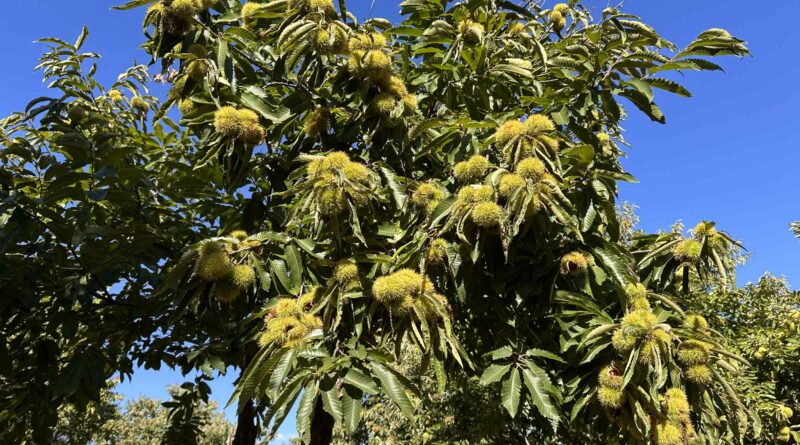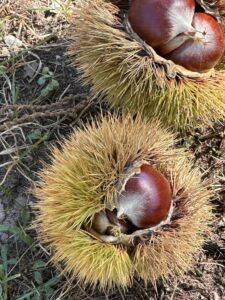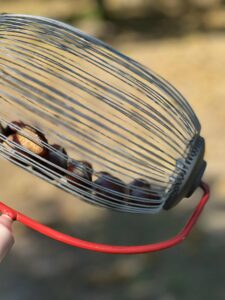Michigan Chestnut Love
October is Michigan Agritourism Month – a time to celebrate the amalgamation of the state’s rich agricultural and tourism industries, valued at $104 billion and $54.8 billion, respectively. The Great Lakes puts Michigan in a unique position creating a microclimate which provides ideal growing conditions for more than 300 commodities. As such, Michigan ranks #2 in the country for agricultural diversity behind California.
One of the more unique crops grown in Michigan is chestnuts. In fact, Michigan is first in the nation for chestnut production with these sweet, meaty nuts grown on over 140 farms (more than 700 combined acres) producing nearly a half million pounds annually.
Chestnut Haven, located on Powell Road in Kewadin (western Antrim County), is one of the largest operations in the northern lower peninsula. Kate and Tim Curtis purchased this farm just a few years ago and worked to clean up the 14-acre orchard which boasts over 900 colossal chestnut trees. For a short four or five weekends from late September to early November depending on the weather, they open up their farm for public u-pick chestnut harvesting.
For those who have never seen chestnuts growing it is a sight to see. Each ancient looking tree is full of prickly burrs and inside there are typically three chestnuts. As the nuts mature, the burrs bust open and fall to the ground, spilling the chestnuts on the ground. Touching or stepping on these burrs can be painful (they’re almost like small, cactus pods) so closed toed shoes are recommended. When walking the orchard, visitors should also be aware of falling burrs, which create a whimsical “thump” sound as they hit the ground.
Upon arrival, visitors are handed a 5-gallon bucket and a large garden weasel designed specifically to grab the chestnuts as the steel slotted drum is rolled over them. The process is awkward at first, but soon a rhythm takes over and the collection becomes a peaceful, almost therapeutic activity. As the weasel fills, you simply spread the spokes apart and empty the chestnuts into the bucket, then repeat the process until you’ve gathered the desired amount. Chestnuts are then floated to determine which are the best of the best-which are sold for $5 a pound. The floaters, which may or may not be ideal chestnuts, are sold for just $1 a pound.
Now that you have your chestnuts…what do you do with them? They can be scored with an X or cut in half, put in a pan with olive oil and sea salt and roasted to be eaten like popcorn. They can, of course, be cut in half and roasted over an open fire. The cooked meat can be chopped up and added to Brussel sprouts, stuffing, soups and other hearty dishes. The chestnuts can be dried and the nut ground down to make flour. Chestnuts are stored in the refrigerator and can last for a couple months. They can also be cooked and frozen, which increases the shelf life. Do you have a favorite chestnut recipe?
According to the Michigan Ag Council (MichiganGrown.org)
- Chestnut flour is a gluten-free alternative to wheat flour.
- Chestnuts are an excellent source of iron, and unlike other nuts, are low in fat.
- Chestnuts are a good source of thiamin B1, potassium, riboflavin B2 and phosphorous.
- Chestnuts are the only nut that contains a significant amount of vitamin C.
- Chestnuts have one third the calorie content of peanuts and cashews.
- High in complex carbohydrates, chestnuts are called the grain that grows on trees.
Did you know National Chestnut Day is celebrated on December 14?



